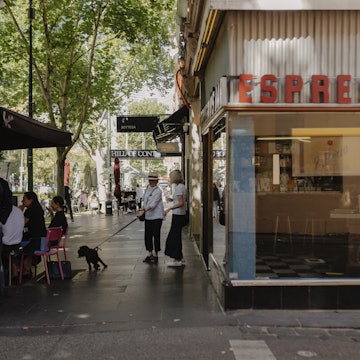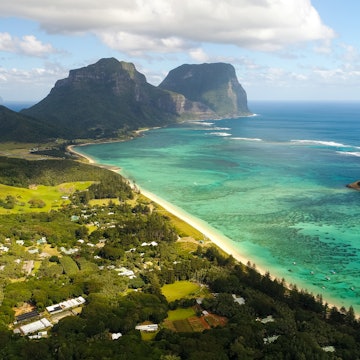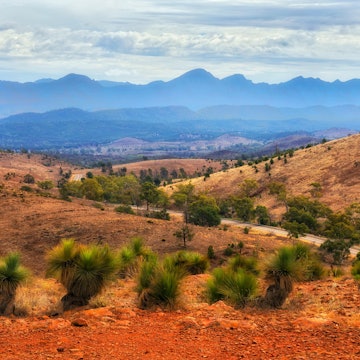

Don't let a forgotten tourist visa ruin your Australian getaway © xavierarnau/Getty Images
Planning a trip to Australia? Whether you’re heading Down Under for a short break or extended working holiday, you’ll likely need a visa.
Here’s your complete guide to filling out your paperwork for a visit to Australia.
Do I need a visa for Australia?
Most visitors to Australia will need a visa, but the type of visa you apply for depends on your country of origin, how long you plan to stay in Australia and what you plan to do while you’re there.
Most tourists must apply for either an Electronic Travel Authority (ETA) or a visitor visa before traveling. The exception is New Zealand passport holders, who are issued a Special Category visa upon arrival.
Your passport must be valid for the duration of your intended stay. You’ll also need to ensure you have sufficient funds to cover your stay. Depending on your visa category, you may be asked for proof of this upon arrival.
What type of visa do I need to travel to Australia?
The Australian Department of Home Affairs’ (DoHA) visa finder can help you determine what visas you’re eligible for based on your citizenship, your travel purpose and your intended length of stay.
Here are the three main tourist visa categories:
For visitors from visa-exempt countries: ETA (subclass 601)
If you hold a passport from a visa-exempt country – including the United States, the United Kingdom, Canada or Singapore – you’re eligible for an Electronic Travel Authority (ETA). With an ETA you can visit Australia as many times as you like for tourism purposes within a one-year window, staying for up to three months per visit.
Attached digitally to your passport number, an ETA allows for a simplified entry process into Australia. An application needs to be completed via the dedicated ETA app before you arrive and usually is processed within a day. However, it’s recommended that you apply for it a few days in advance to ensure you have the ETA in time for your departure.
While ETAs are free, there is an application service charge of $20.
If you’re already in Australia and you want to extend your stay, you will need to apply for a Visitor visa.
For visitors from European countries: eVisitor visa (subclass 651)
The eVisitor visa is free and available for passport holders from most European countries. It offers similar conditions to an ETA: Visitors can stay for up to three months for tourism purposes. It’s valid for 12 months, with multiple entries permitted.
You can apply for the eVisitor online. Processing time is usually within a day, but it’s recommended that you apply well in advance of your intended travel date in case of delays. This visa can’t be extended, so if you wish to stay longer, you’ll need to apply for a Visitor visa.
If you hold a passport from a country that’s eligible for both an ETA and an eVisitor visa, you’ll find the two options are nearly identical. The main difference is how you apply for them: ETAs must be applied for through an app with a fee of $20. There is no charge for eVisitor visas, but you’ll need to register for an ImmiAccount and apply online through a web browser.
For all other tourists: Visitor visa (subclass 600)
If you’re not eligible for an ETA or an eVisa and plan to visit Australia for tourism-related purposes, you’ll need to apply for a Visitor visa from outside Australia. This visa may be granted for up to 12 months and may be single or multiple entry. Conditions are determined on a case-by-case basis. A visitor visa starts at $190, but there may be other associated costs including health examinations, police clearances or biometrics, depending on your passport.
Although most visitor visas are processed within a few weeks, it can take longer in peak periods, so it must be applied for well in advance of your trip. Standard processing times change regularly and can be monitored on the DoHA site.
Once you apply, you can track your application through your ImmiAccount. You may be required to submit additional information, so check your application regularly to provide any further details to keep the process moving.
How do I extend my visa to Australia?
Enjoying your stay in Australia and don't want to leave? We don’t blame you.
Depending on your visa, you may be able to apply for a new visa to stay in the country longer. Visitors who are already inside Australia and wish to stay longer as tourists may use the onshore Visitor visa (also subclass 600) to extend their stay.
Make sure you apply for your new visa before your current visa expires. If you’ve submitted your application before your current visa expires, you’ll be granted a free bridging visa until your new one is processed.
What if I want to work and travel around Australia?
Working holidays are a popular option for travelers who want to fund their adventures and immerse themselves in Australian life and culture.
Australia’s Working Holiday Maker program is available for visitors between the ages of 18 and 30 (and up to 35 in some cases) from 40 participating countries and jurisdictions around the world.
There are two classes of visas available under this program: the Working Holiday visa (subclass 417) and the Work and Holiday visa (subclass 462). Which one you apply for depends on the passport you hold. Both are valid for 12 months and cost $635, and both enable you to legally work while in Australia.
Many working holiday visa makers find that one year isn’t enough. Fortunately, you may be able to extend your working holiday visa for a second or even a third year. In order to do so, you’ll need to complete “specified work” in a “regional area” for a period of three months (for a second year) or six months (for a third year) first.
This specified work is usually referred to as “farm work” in backpacker circles, but it’s a bit of a misnomer. It’s a common misconception that you need to head to the woop-woops (that Aussie for “middle of nowhere”) and pick fruit to complete your specified work. In fact, there are a range of approved industries the program, including tourism and hospitality, construction and bushfire recovery. Likewise, “regional areas” aren’t just found in remote rural areas; some major cities (including Darwin and Adelaide) are eligible post codes. So while you might find yourself harvesting bananas in a tiny town in tropical Queensland, you could just as easily find yourself serving tables at a luxury lodge in Darwin or working in a winery in the Barossa.
For more information on the working holiday visa program, you can also visit Tourism Australia’s dedicated portal.














